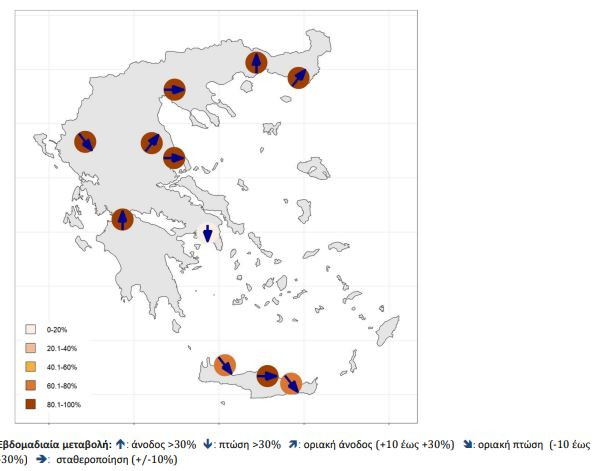295% increase in viral load in Patras – Continued de-escalation in Attica with minus 62%
Fluctuations in viral load by region, indicators that highlight future outbreaks or de-escalations, were also included in the weekly pandemic data report.
THE today’s report shows a huge increase in the viral load in Patras, which reaches 295%, while the de-escalation continued in Attica (minus 62%), although the capital region still gives the most cases, due to its large population.
An increase, albeit marginal (4%), is shown in Thessaloniki, as well as in Larissa, Volos, Xanthi, Alexandroupoli and Corfu. The viral load shows decreasing trends in Crete and especially in Chania, Heraklion, Agios Nikolaos, while a drop was also recorded in Ioannina.
In conclusion, during the week of July 25 to 31, 2022, increasing trends were observed, compared to the week of July 18 to 24, 2022, in the average weekly viral load of SARS-CoV-2 in municipal wastewater in five of the twelve (5/12) areas that were controlled by the National Wastewater Epidemiology Network (EDEL) of EODY, decreasing trends in three of the twelve (3/12) EDEL areas and stabilization in four of the twelve (4/12) EDEL areas.
There was a clear upward trend in the average weekly viral load of urban sewage in Xanthi (+36%) and Patras (+295%), while the increase was marginal in Alexandroupolis (+11%), Larissa (+13%) and in Corfu (+23%). A net downward trend was found in the Region of Attica (-62%), while the reduction of the viral load in municipal wastewater was marginal in Agios Nikolaos (-14%) and Ioannina (-23%). The viral load of municipal sewage remained stable in Chania (-10%), Heraklion (-2%), Thessaloniki (+4%) and Volos (+6%).
View the news feed and get the latest news.











